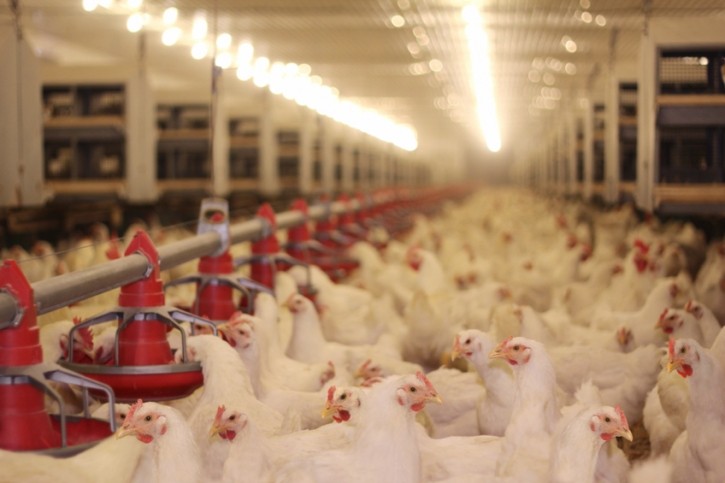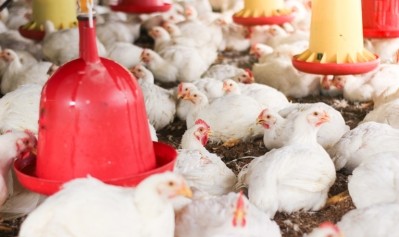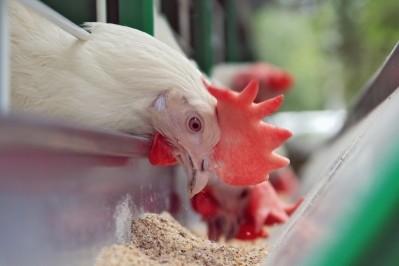Special Edition: Animal husbandry: genetics, nutrition and management link
It’s all in the genes: team sees digestive efficiency and sustainability link in broilers

“The quantity of feed spared by rearing a line of medium growth broilers selected for digestive efficiency compared to a commercial line of birds was 9.77 tons of feed per flock of 20,000 chickens,” found study lead, Sandrine Grasteau, who is based at the French national agriculture research institute, INRA.
The proportion of the medium growth rate chickens sold as whole carcass at retail level in France in 2013 was 11%, while it was 57% for slow growing Label Rouge chickens, standard rapid growing broilers accounted for 26% of that segment and and organic chickens 6%, according to according to data from the Technical Institute for Poultry Production in France (ITAVI).
In terms of chicken meat cuts sold in France that same year, medium growth rate chickens accounted for 18% of that segment, while the Label Rouge type represented 11%, standard rapid growing broilers 68% and organic chickens only 3%.
Improving feed efficiency is a major factor in reducing the costs of poultry production and the environmental impact of chicken production.
Many genetic studies have shown that feed efficiency could be improved by selecting on growth, FCR or feed intake. Grasteau said her and her colleagues’ many years of research in this area shows the ability of the animal to digest its feed could also be used as a selection criterion.
In fact, the results of their research are increasingly informing breeding companies in how they select for increasingly selecting for traits, she said.
“There are a limited number of breeding companies internationally and they are interested in research showing the traits that could make chickens adaptable to changeable conditions. Also, selecting birds able to digest more varied and less optimal diets, and thus excrete less, could be a way to minimize the negative environmental impacts of poultry production,” Grasteau told us.
Feed and feed competition
But alleviating the competition between feed and food has been a fundamental objective of Grasteau and her team’s efforts. And selection for digestive efficiency using a diet difficult to digest has been shown to be efficient to increase the proportion of poor quality feedstuffs in the diet, she said.
“Our ultimate goal is the diversification of feedstuffs in a broiler chicken’s diet to reduce the amount of cereals like soy being fed to the birds, leaving more crops available for human consumption.
“In that respect, we are aiming to increase the inclusion levels of cereal by-products, or low quality wheat, DDGS or sunflower meal and rapeseed oil,” she said.
But such components are typically harder to digest than corn, and poultry producers need homogeneous flocks in terms of final weight. For that reason, the team experimented with different broiler lines.
In one trial, they selected a pure line of broilers of medium growth rate due to their ability to digest a challenging diet, choosing the birds for high and low digestive efficiency.
Sustainability measurements
“We then evaluated the impact of this selection on a wide range of traits related to the economic, social and environmental pillars of sustainability,” said Grasteau.
Looking at 600 chickens issued from selection for high or low digestive efficiency given a classical corn and soybean diet or alternative wheat and sunflower meal diet, the researchers said they carried out analyses on each pillar of sustainability.
For the economic pillar, they recorded growth, feed consumption, feed efficiency, digestibility of phosphorus, anatomy of the digestive tract, carcass composition and meat quality. For the environmental pillar, they noted quantity of litter and temperature, humidity, nitrogen, and ammonia and phosphorus content of the litter.
And for the social pillar, the team measured normal animal behavior, presence of dermatitis, bone yield and mineralization and susceptibility to disease.
Their results showed that birds with high digestive efficiency had a positive impact on economic and environmental traits, with better efficiency, lower consumption, and less manure production. However, when it came to health and behavior traits, the two lines were similar, apart from a better bone yield in the high line. “Essentially, the broilers with low digestive efficiency were far more sensitive to the challenging diet,” said Grasteau.
The researchers also found, she said, that the broiler line chosen for high digestive efficiency outperformed a commercial group of birds in a comparative trial in terms of manure production and on the economic front.
EPGS_2013 by Jane Byrne on Scribd








